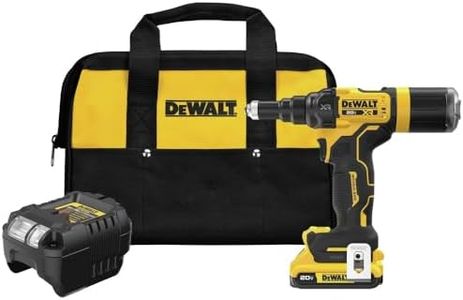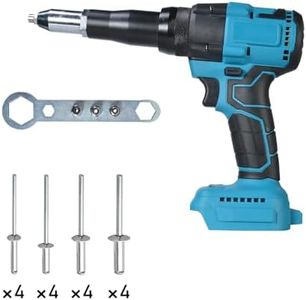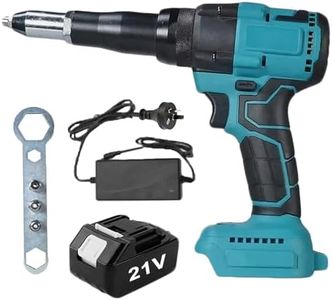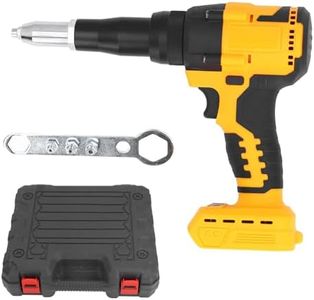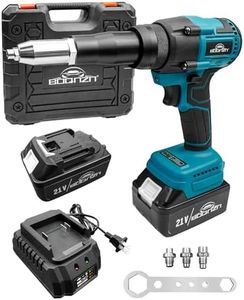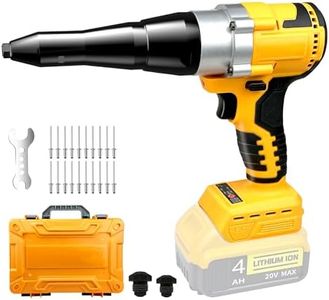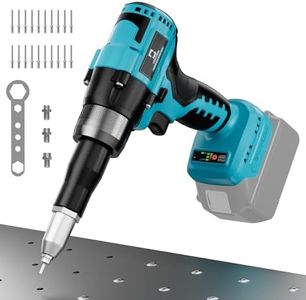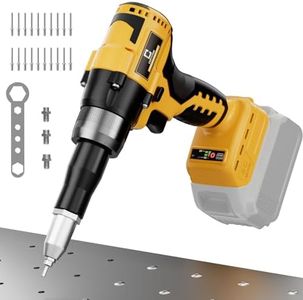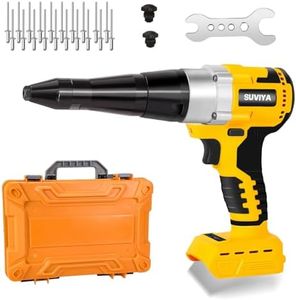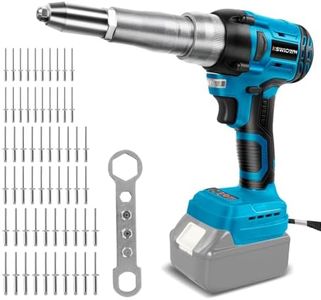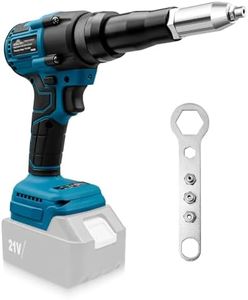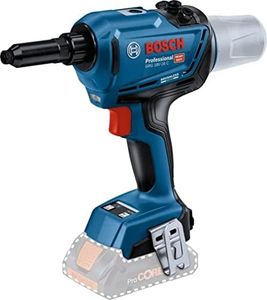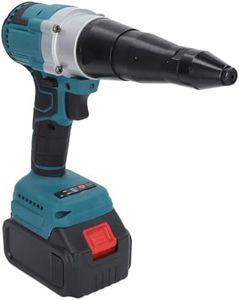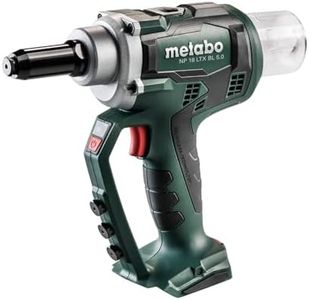We Use CookiesWe use cookies to enhance the security, performance,
functionality and for analytical and promotional activities. By continuing to browse this site you
are agreeing to our privacy policy
10 Best Cordless Rivet Guns
From leading brands and best sellers available on the web.Buying Guide for the Best Cordless Rivet Guns
Selecting the right cordless rivet gun is all about matching the tool to the kind of projects you’ll tackle. Since cordless models offer greater mobility compared to pneumatic or corded versions, it’s important to focus on how much work you expect to do, the materials you’ll be riveting, and how convenient you want the process to be. Think about how often you’ll use the tool and in what kind of settings – at home, in the workshop, or on job sites. With that in mind, pay special attention to certain key specs and features that can make using the tool effective and comfortable.Battery Voltage & CapacityBattery voltage and capacity both tell you about the power and runtime of your cordless rivet gun. Higher voltage usually means more power, making it quicker and easier to set tougher, larger rivets, while higher capacity (measured in amp-hours, Ah) means the tool will last longer between charges. Tools with lower voltage and capacity (such as 12V/1.5Ah) are lighter and ideal for lighter, occasional tasks, while 18V+ models with larger batteries suit frequent or professional use. If you do longer jobs or work with thicker materials, go for higher voltage and a bigger battery. For quick jobs or portability, a lower-voltage, lightweight model will do.
Compatible Rivet SizesCordless rivet guns work with different diameters and types of rivets (like aluminum, steel, or stainless steel). The tool’s rivet size range determines what projects you can tackle. Smaller tools might only accept up to 3/16-inch rivets, while heavy-duty ones can handle 1/4-inch or even bigger. If you mostly work with thin sheet metal or crafts, a tool for smaller rivets is fine; for automotive, construction, or heavy fabrication, choose a model that fits larger diameters.
Pulling ForcePulling force, often listed in pounds or kilonewtons (kN), describes the strength the gun applies to set a rivet. Low pulling force is suitable for small, soft-metal rivets, while higher force is needed for large or stainless steel rivets. Segment grade: under 1,800 lbs for light household jobs, 1,800–2,600 lbs for general workshop use, and 2,600 lbs+ for industrial or heavy-duty tasks. Match the pulling force to the toughest rivet you plan to use—bigger is better for versatility but may mean a heavier tool.
Nosepiece Options and StorageNosepieces are the parts that fit over the rivet and are chosen based on rivet size. The more nosepiece options included, the more versatile the tool – and in some cases, tools have onboard storage for them. When you use only one size, you won’t care much, but for varied or future tasks, look for multiple nosepiece attachments and easy access or storage on the tool.
Cycle Speed (Rivets per Minute)Cycle speed measures how quickly the tool can set each rivet, either in seconds per cycle or rivets per minute. For occasional or DIY work, slower speeds are fine – you’ll rarely notice. But if you’re doing repetitive or production work, higher cycle speeds (more rivets/minute and shorter per-cycle time) reduce fatigue and speed up jobs.
Weight and ErgonomicsThe overall weight and how the tool feels in your hand makes a difference during prolonged use. Lighter, well-balanced models are easier to control and cause less strain. If you’ll be holding the tool for hours or working in awkward positions, prioritize ergonomic design and lower weight. Occasional users can accept a heavier unit if the features are right.
Mandrel Collection SystemWhen you set a rivet, the leftover stem (mandrel) needs to go somewhere. Some tools eject the mandrel automatically into a collection container, keeping your workspace tidy and safe. If dropped mandrels could be a hassle or safety issue, look for a tool with a mandrel collection system. For one-off or small jobs, this feature is less critical.
